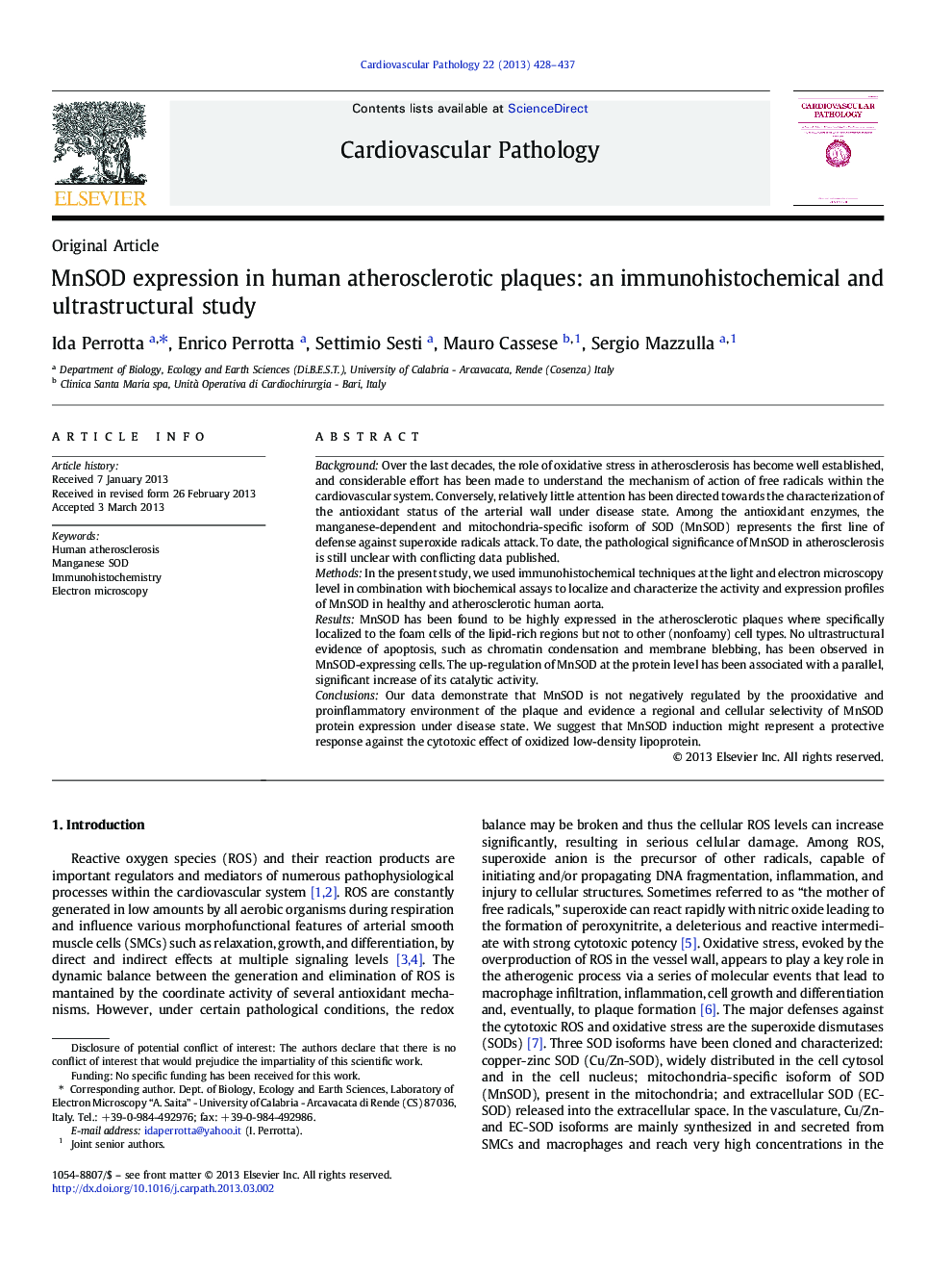| Article ID | Journal | Published Year | Pages | File Type |
|---|---|---|---|---|
| 2898994 | Cardiovascular Pathology | 2013 | 10 Pages |
BackgroundOver the last decades, the role of oxidative stress in atherosclerosis has become well established, and considerable effort has been made to understand the mechanism of action of free radicals within the cardiovascular system. Conversely, relatively little attention has been directed towards the characterization of the antioxidant status of the arterial wall under disease state. Among the antioxidant enzymes, the manganese-dependent and mitochondria-specific isoform of SOD (MnSOD) represents the first line of defense against superoxide radicals attack. To date, the pathological significance of MnSOD in atherosclerosis is still unclear with conflicting data published.MethodsIn the present study, we used immunohistochemical techniques at the light and electron microscopy level in combination with biochemical assays to localize and characterize the activity and expression profiles of MnSOD in healthy and atherosclerotic human aorta.ResultsMnSOD has been found to be highly expressed in the atherosclerotic plaques where specifically localized to the foam cells of the lipid-rich regions but not to other (nonfoamy) cell types. No ultrastructural evidence of apoptosis, such as chromatin condensation and membrane blebbing, has been observed in MnSOD-expressing cells. The up-regulation of MnSOD at the protein level has been associated with a parallel, significant increase of its catalytic activity.ConclusionsOur data demonstrate that MnSOD is not negatively regulated by the prooxidative and proinflammatory environment of the plaque and evidence a regional and cellular selectivity of MnSOD protein expression under disease state. We suggest that MnSOD induction might represent a protective response against the cytotoxic effect of oxidized low-density lipoprotein.
